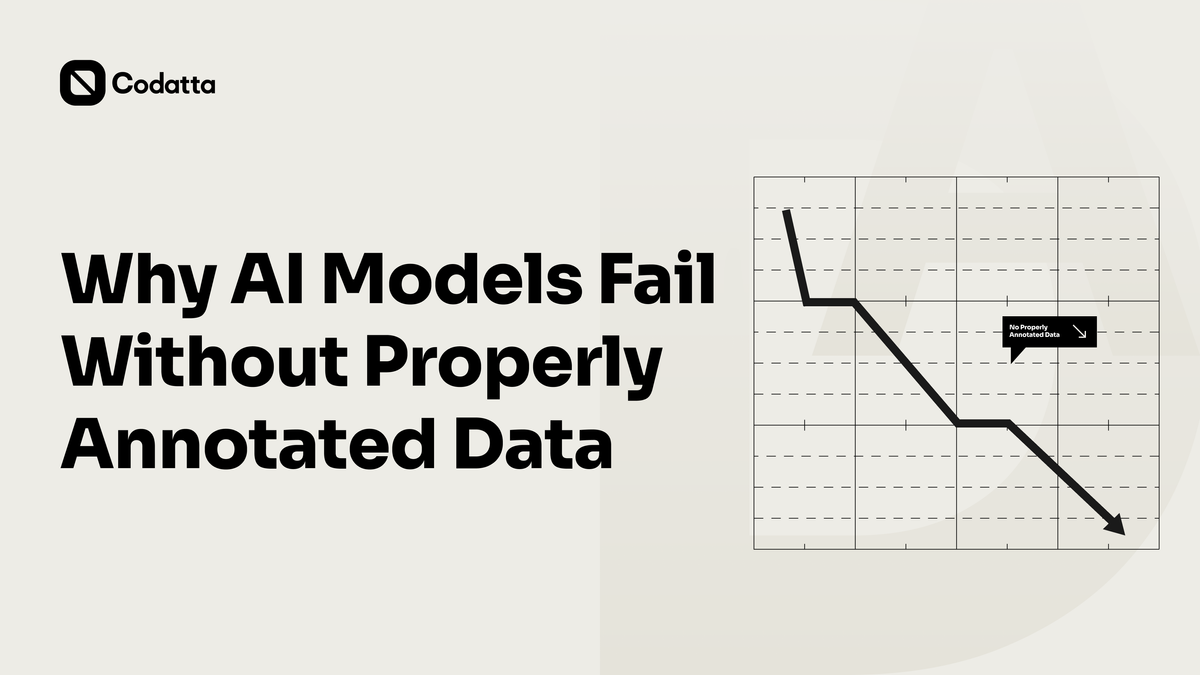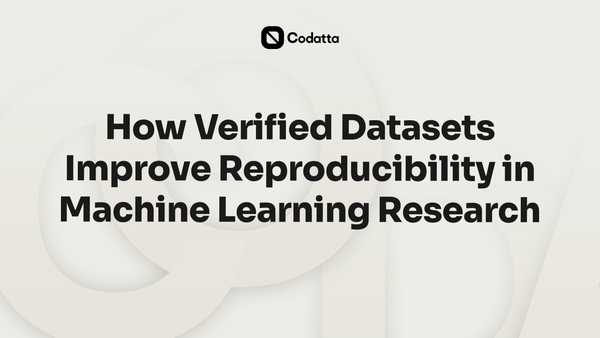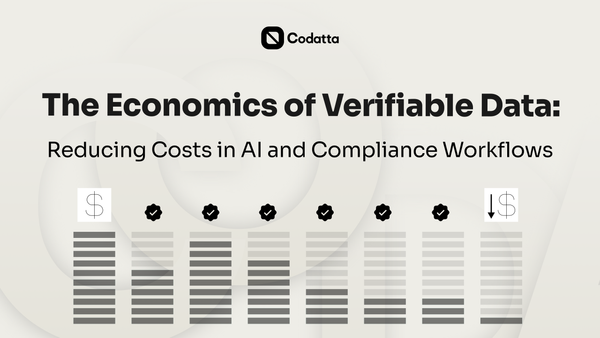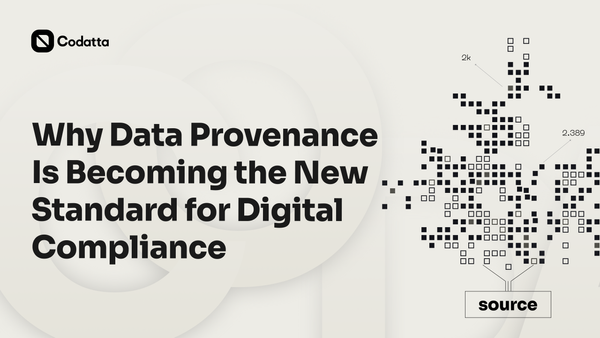Why AI Models Fail Without Properly Annotated Data

Every AI model is only as good as the data it learns from. When training data is poorly labeled or inconsistent, the entire AI system becomes unreliable, producing weak outputs, higher error rates, and results that can’t be trusted. Proper data annotation and data labeling aren’t just support services; they are the foundation of every successful AI project. Without high-quality data, even the best algorithms fail.
In this article, we explore why annotation matters, what happens when poor data quality takes over, and how better approaches to labeling can safeguard AI systems for real-world use.
How Poor Annotation Breaks Models
When AI projects fail, the cause is often traced back to poor data annotation. If you label data inconsistently, the model learns the wrong patterns, leading to overfitting and false confidence in its predictions. Research shows that mislabeled training sets can distort accuracy scores and make models look more reliable than they actually are (Northcutt et al., 2021). Wrong test labels add to the problem, giving a false sense of performance and leaving serious gaps in model training (Guo et al., 2017).
For teams that rely on outsourcing data annotation or low-cost data annotation services, these risks only grow, especially when data privacy is not managed correctly. Inconsistent or careless labeling is one of the main reasons AI projects fail, no matter how advanced the architecture seems. Without high-quality data, no model can deliver dependable results.
Real-World Consequences
The impact of poorly labeled data is not theoretical. It has already undermined major AI initiatives across industries. In healthcare, mislabeled data in medical imaging has been linked to misdiagnosis, reducing the performance of AI models trained to detect conditions such as pneumonia (Zech et al., 2018). When training data quality slips, even advanced machine learning models fail to deliver accurate results, showing how data annotation is the foundation of AI success.
In finance, bad data annotation can trigger unstable fraud detection systems, where false positives overwhelm analysts and false negatives let suspicious activity slip through. For data scientists and risk teams, the performance of AI models in fraud prevention depends on accurate data annotation and strict data privacy standards. Poor data annotation leads directly to AI project failures, because mislabeled data points distort the signals AI algorithms rely on.
In natural language processing, poorly labeled data has produced biased search outputs and flawed content moderation, with downstream effects on user trust and compliance with data privacy regulations. Generative AI models built on raw data without scalable data annotation inherit these flaws, amplifying bias instead of correcting it.
Across all domains, the lesson is consistent: data annotation in AI projects is the make-or-break factor. Without accurate data annotation, the foundation of AI collapses, and the potential of AI technologies cannot be realized.
What Good Annotation Looks Like
If poor data labeling leads to AI model failures, then high-quality data annotation is what keeps AI and machine learning projects on track. Data annotation leads to AI systems that can actually perform as designed, but only when the process is built with care and precision.
First, clear guidelines and task design are essential. When instructions are vague, annotation teams produce inconsistent results, and the risk of poor data labeling rises. Studies on crowdsourced annotation (Snow et al., 2008) show that well-structured tasks dramatically improve both accuracy and efficiency.
Second, inter-annotator agreement and expert review provide another safeguard. Comparing multiple annotations of the same data point reduces error, while expert oversight ensures that mislabeled cases do not slip into training data unnoticed. This step is especially important for domains where data privacy and accuracy carry high stakes, such as healthcare and finance.
Finally, confidence scoring and provenance strengthen reliability at scale. Assigning a confidence score to each annotation allows projects to quantify reliability and filter out weak contributions. Provenance — the ability to track where data came from and how it was labeled — aligns with the FAIR principles (Wilkinson et al., 2016) and helps ensure that annotated data remains transparent and verifiable.
Together, these practices form the backbone of high-quality data annotation. Without them, AI projects risk repeating the same cycle of poor data labeling that has already caused so many AI model failures.
Fixing Label Issues
Even with careful task design, annotation is never perfect. Data can lead to errors, bias, or inconsistencies that weaken the performance of AI systems. Many AI projects face these data quality issues, but there are practical ways to reduce the risk.
One approach is confidence-based relabeling. When data annotation teams assign confidence scores to each label, low-confidence entries can be flagged for review or correction. This process ensures that sensitive data and high-impact cases receive extra scrutiny, improving trust in the dataset.
Active learning offers another solution. Research shows that machine learning models can be trained to identify which data points are most uncertain and request additional labels for them (Settles, 2009). This approach to data reduces wasted effort and makes annotation more efficient by focusing on areas where models are weakest.
Finally, robust training methods allow AI models to tolerate noisy labels instead of collapsing under them. Techniques like loss correction and noise-robust optimization (Patrini et al., 2017) help models learn effectively even when some data is biased or mislabeled.
Data annotation provides the foundation for AI, but without mechanisms to catch and correct errors, the risks compound. Building in checks such as confidence scoring, active learning, and robust training keeps datasets usable and prevents small flaws from undermining entire projects.
Final Thoughts: Why AI Models Fail Without Properly Annotated Data
When AI models fail, it is often due to poor data rather than flaws in the algorithms themselves. No matter how advanced the architecture looks, AI models need reliable, accurately labeled datasets to perform well. If the quality of your data slips, the output of the entire system weakens.
As organizations generate vast amounts of data, the challenge is making sure that data becomes structured, annotated, and trustworthy before it enters model training. The lesson is clear: focus on dataset quality before adding model complexity.
At Codatta, this principle drives our work. The protocol is designed to turn raw contributions into high-quality, verifiable datasets, ensuring that AI systems have the foundation they need to succeed.




